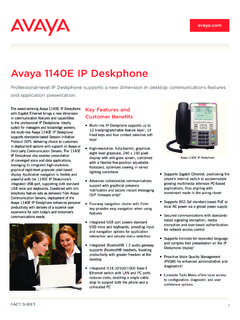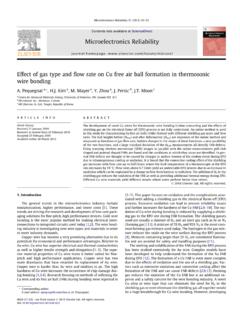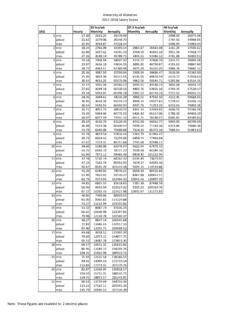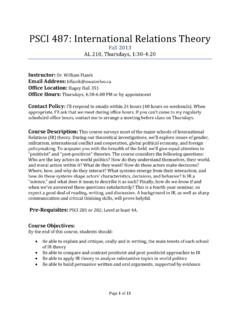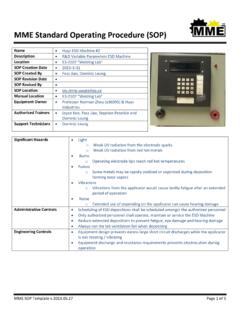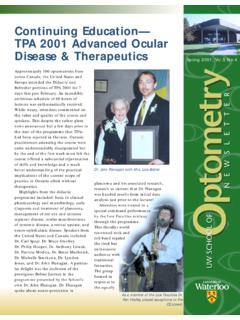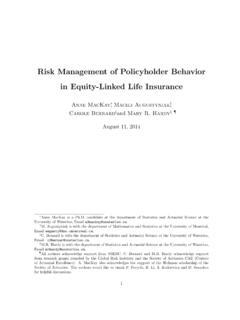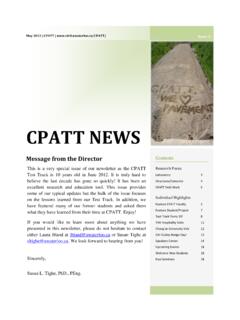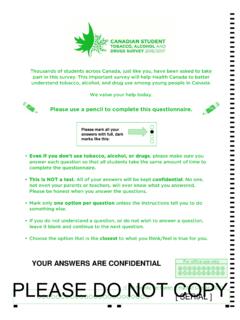Transcription of Bloom’s Taxonomy: Psychomotor Domain
1 References: Clark, (1999) bloom s taxonomy : The Psychomotor Domain . Retrieved from ~donclark/hrd/ Simpson, (1966). The Classifications of Educational Objectives, Psychomotor Domain . University of Illinois. Urbana, Illinois. Set How ready one is to act (physically, mentally and spiritually) Guided ResponseBeginner level, learns through trial and error by practicingMechanismIntermediate level, develops proficiency and action becomes habitual Complex Overt ResponseExpert level.
2 High proficiency and performs with accuracyAdaptationSkills strongly developed and can be modified in different situationsOriginationCreate new procedures and solutions to approach various situationsarranges begins demonstrates displays explains moves prepares proceeds reacts responds shows states assembles attempts builds copies follows imitates reacts reproduces responds traces tries assembles constructs dismantles displays fastens fixes grinds measures mends mixes organizes sketches assembles builds calibrates constructs dismantles displays fastens fixes grinds heats measures mends mixes organizes operates performs sketches adapts alters changes modifies rearranges reorganizes revise varies arranges builds combines composes constructs creates designs formulates initiates makes modifies originates re-designs bloom s taxonomy : Psychomotor Domain Psychomotor Domain .
3 Ability to use motor skills that includes physical movement, reflex and coordination to develop techniques in execution, in accuracy and time This Creative Commons license lets others remix, tweak, and build upon our work non-commercially, as long as they credit us and indicate if changes were made. Use this citation format: bloom 's taxonomy : Psychomotor Domain . Centre for Teaching Excellence, University of Waterloo. References: Clark, (1999) bloom s taxonomy : The Psychomotor Domain . Retrieved from ~donclark/hrd/ Simpson, (1966).
4 The Classifications of Educational Objectives, Psychomotor Domain . University of Illinois. Urbana, Illinois. Set Guided Response Mechanism Complex Overt Response Adaptation Origination Learning Activities Attend project exhibition Observe demonstrations through audio, videos, visuals Listen to music Prepare blueprints and designs for construction Set-up and warm-up before exercise Set-up machine Set-up lab equipment for experiments Complete training Experiment using new tools/instruments through trial and error Follow manual to run and program machine Games and hands-on activities Use new tools by following demonstrations or being guided by mentor Cognitive rehearsal of a physical task Perform gross motor movements (ex.)
5 Dead lift, squats etc.) Practice instruments and use controlled movements Program and practice running machines Practice using equipment Control and use correct movements when playing instruments Final projects Operate and run machines efficiently (ex. drill press, band saw, pump etc.) Perform fine movements (ex. Adjust stopcock of a burette) Use equipment with confidence Control fine movement changes required for music dynamics and style field -trips Strategic games Revise and improve procedures of movements Use tools for situations outside typical discipline Creates own choreography Create own process in executing physical tasks Strategically creates own workout plans Assessments Pre-lab assessment Self-criteria Summary of demonstration and set-up process Evaluate accuracy with criteria on standard
6 Performance Give feedback Performance test (performance indicators) Self-evaluation on performance (based on progress and confidence) Clinical exams Final project (ex. Create project exhibition) Performance Assess and evaluate outcomes Self-criteria Assess and evaluate outcomes Rubric Self-criteria This Creative Commons license lets others remix, tweak, and build upon our work non-commercially, as long as they credit us and indicate if changes were made. Use this citation format: bloom 's taxonomy : Psychomotor Domain .
7 Centre for Teaching Excellence, University of Waterloo.
